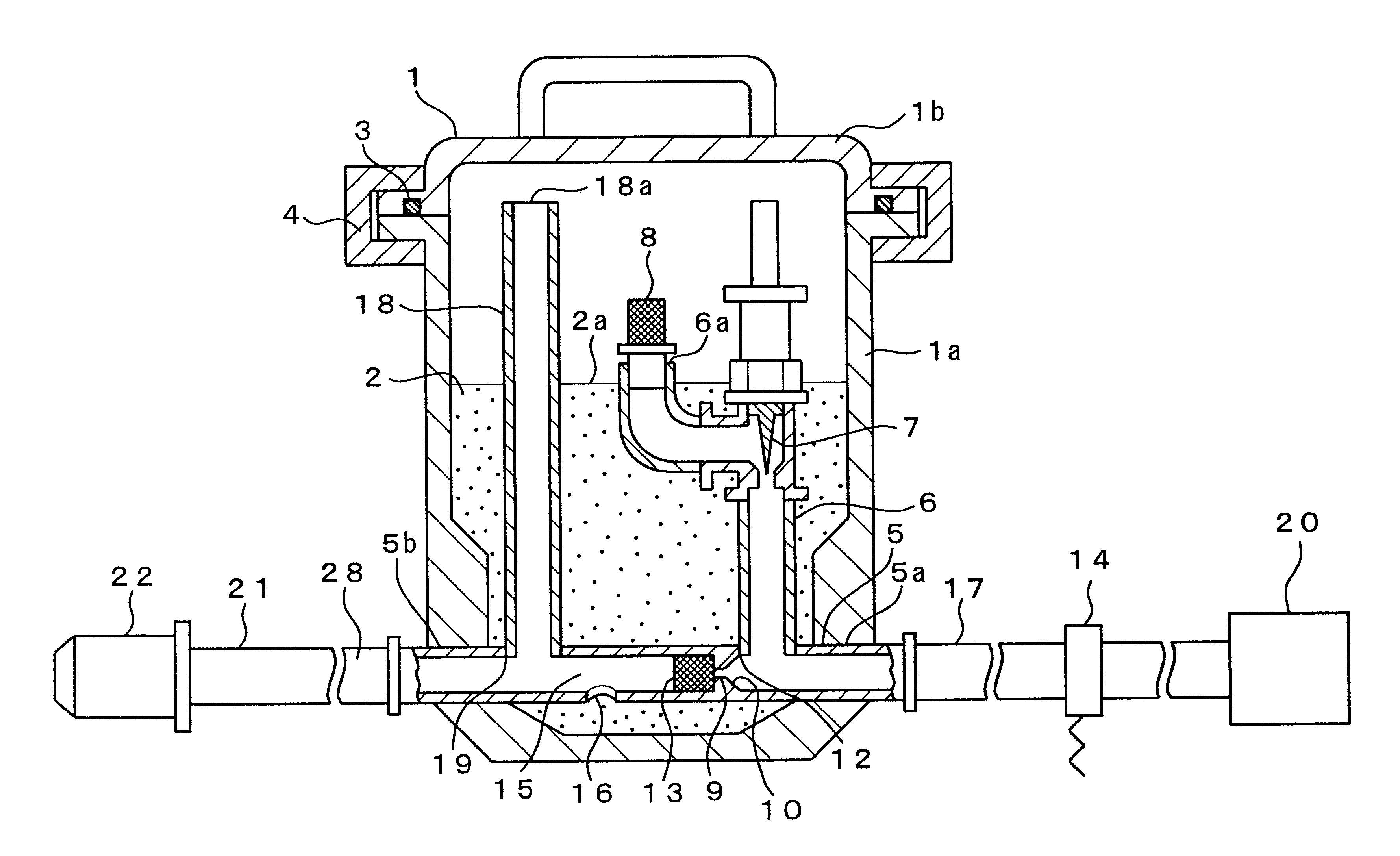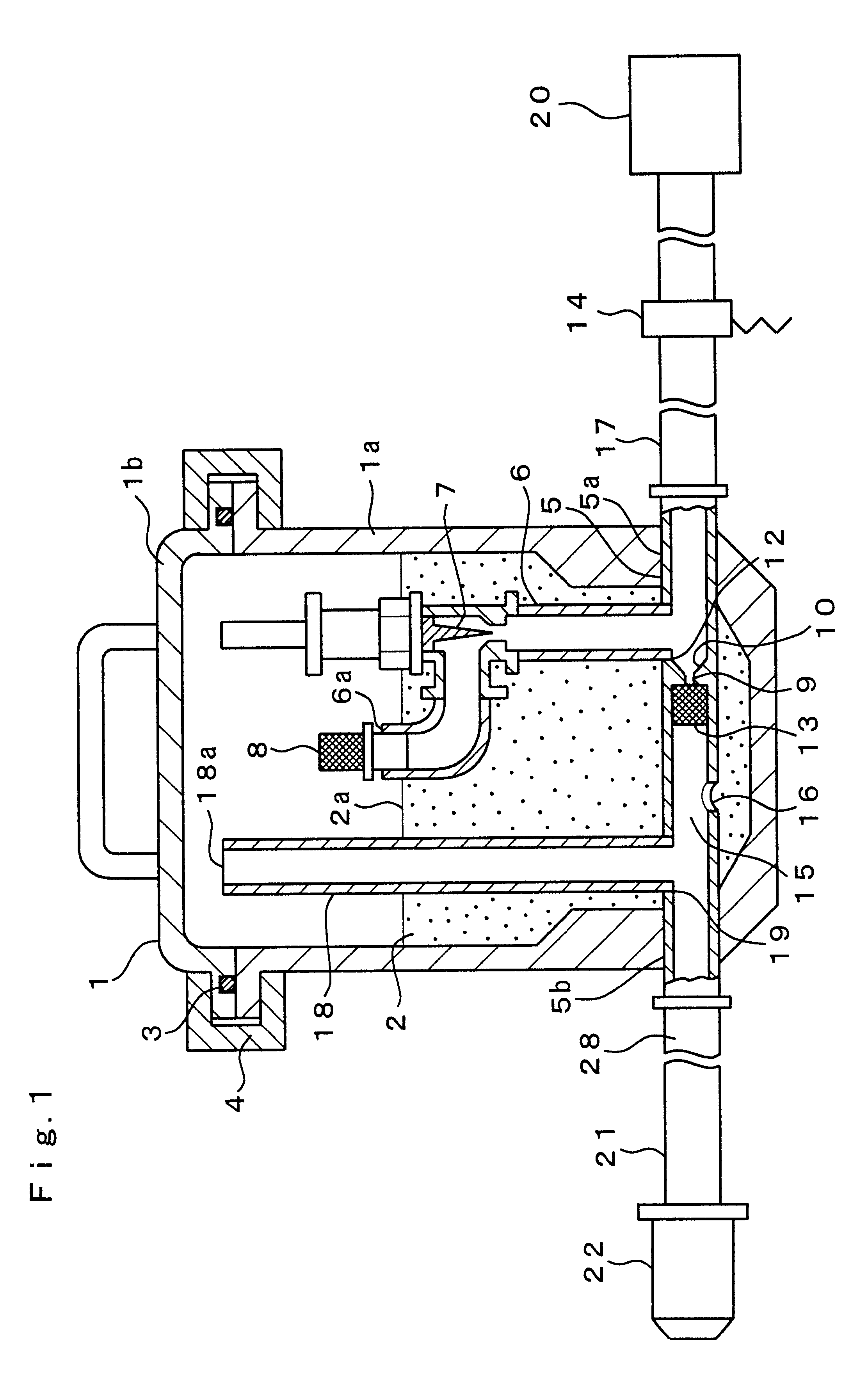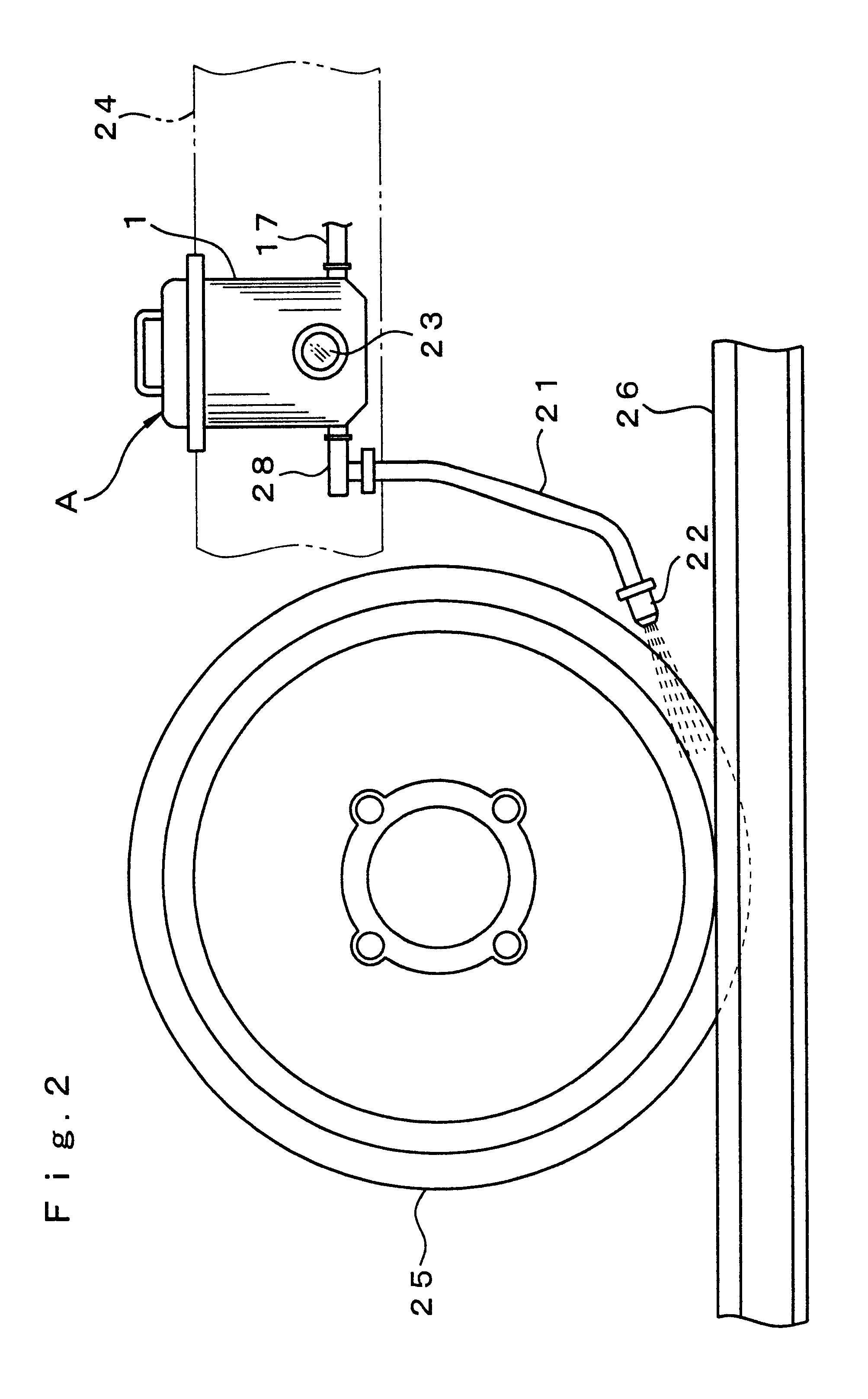Slip prevention particle injection device
a technology of injection device and injection chamber, which is applied in the field of slip prevention particle injection device, can solve the problems of low tacking coefficient between the wheels and the rails, high speed slippage of the wheels of railway rolling stock, and idle rotation of the wheels, so as to reduce the cost of preventing slippage, reduce production cost, and simple structure
- Summary
- Abstract
- Description
- Claims
- Application Information
AI Technical Summary
Benefits of technology
Problems solved by technology
Method used
Image
Examples
Embodiment Construction
FIG. 1 illustrates an embodiment of the injector device in accordance with the present invention. In the figure, the reference numeral 1 stands for a particle retainer tank retaining slippage-preventing particles 2. The tank 1 comprises a tank body 1a and a cover 1b and is constructed as a pressure-resistant sealed container. The pressure resistance ability of tank 1 is preferably no less than 10 kgf / cm.sup.2. The tank 1 is opened via the cover 1b and the inside of the tank body 1a is filled with the prescribed quantity of slippage-preventing particles 2. In a closed state, air-tight contact between the tank body 1a and cover 1b is maintained by an O ring 3. Moreover, the cover 1b is tightly secured to the tank body 1a with a locking part 4.
Any particles increasing tacking coefficient between the wheels and rails may be used as the slippage-preventing particles 2. Examples of suitable particles include natural sand, silica sand, alumina particles, metal particles, or ceramic particl...
PUM
 Login to View More
Login to View More Abstract
Description
Claims
Application Information
 Login to View More
Login to View More - R&D
- Intellectual Property
- Life Sciences
- Materials
- Tech Scout
- Unparalleled Data Quality
- Higher Quality Content
- 60% Fewer Hallucinations
Browse by: Latest US Patents, China's latest patents, Technical Efficacy Thesaurus, Application Domain, Technology Topic, Popular Technical Reports.
© 2025 PatSnap. All rights reserved.Legal|Privacy policy|Modern Slavery Act Transparency Statement|Sitemap|About US| Contact US: help@patsnap.com



